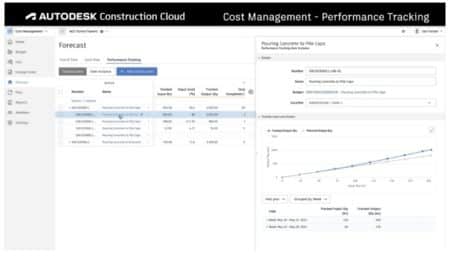CONSTRUCTION IS BIG business, and Autodesk, admittedly, was late to the big “contech” (construction tech) push that has taken place over the last five or so years. It has made big strides over the past few years with key acquisitions and integrations of these acquisitions with older Autodesk solutions.
The reader should be reminded that one of Autodesk’s first key “contech” acquisitions was buying PlanGrid, which not sits within its Autodesk Build solution. A key goal of the integration of various cloud tools into the company’s cloud solutions is to maximize the value of data in BIM models, specifically Revit BIM models.
Construction pros can maximize the value of BIM data when it performs the following functions, (a) accelerates decision-making, (b) helps optimize construction schedule sequencing, and (c) aids in cost management, among others.
Model as Source of Truth
This year at AU22, new schedule and cost management functionalities within Autodesk Build were announced. New capabilities in Autodesk Construction Cloud solutions enable Assets in Autodesk Build to be mapped and visualized in 3D using the latest design model. The benefit here is simple—prevent errors based on outdated BIM model data and connect the most up-to-date assets with the RFI, submittals, and issues processes, and other workflows.
Another important new feature is the ability to atomize BIM model data, parsing data into smaller components and creating custom views of such parsed-out data that are more suitable, relevant, and focused on the construction professional’s task. The reader can see some of this in action in this video here. A new Publish to the Field feature in Autodesk BIM Collaborate enables users to create one-off views and sign-off models for coordination in the field or with other stakeholders. This was announced as in beta. And perhaps the biggest news is the new support for reality capture files, including photogrammetry files, that can be viewed directly in Autodesk Construction Cloud, empowering teams to take off precise measurements from these scan-based files, resolve issues, monitor progress, and close out documentation.

New Performance Tracking tools in the Cost Management module of Autodesk Build help contractors monitor overall cost projections with visual charts and a simple negative 1 (red) and positive 1 (green) denotation system in the user interface.
“Design files are packed to the brim with essential data, but each project stakeholder needs something different from the model,” said Ilai Rotbaein, senior director of research and development at Autodesk Construction Solutions. “The advancements we’re announcing make it easier to access model data, removing unnecessary steps and ensuring the latest information is directly in the hands of those who need it, whether they’re in the office, the trailer, or out in the field.”
Cost and Schedule Control Updates
Additional new updates to Autodesk Build include new workflows for project management and financials. These include:
- Performance Tracking in Cost Management — A new Performance Tracking toolset in Cost Management allows contractors to analyze productivity and cost data in “near real-time.” The tools help reduce potential project risks through schedule delays and cost overruns. Readers can learn more here.
- Schedule Compare and Version Control — robust version compare now allows users to visually compare up to five different versions of the schedule to identify activity changes. There is also a new change history log and unique distribution lists for each schedule update.
Readers can learn more about the new Performance tracking by reading this blog and watching this video here. To learn more about Autodesk Construction Cloud solutions, visit here.
Architosh Analysis and Commentary
Autodesk Build continues to advance with some compelling new features, particularly these new Performance Tracking tools. Using the BIM model as the single source of current truth and reaching into field apps is powerful when contractors can parse out the BIM model for just the data they want to see. But that breakdown parsing process in real life may be more challenging for some users not highly skilled in digital tools.
Autodesk has also shared information about how it is gaining industry traction. Unlike Autodesk’s architectural dominance in major AEC markets, Autodesk has sizeable large software competitors addressing the construction side of the AEC market. The “contech” software market is extremely competitive. Regardless, Autodesk announced that in the 18 months since the release of Autodesk Build, Autodesk Construction Cloud customers have created more than 50,000 projects in the construction management and field collaboration solution, up from 8,000 projects in July 2022. Autodesk also has released more than 300 improvements to Autodesk Construction Cloud solutions in the last year.
Clearly, the development velocity in Autodesk’s solutions aimed at construction professionals is high and corresponds most likely to the strength of competition in the space.



Reader Comments
Comments for this story are closed